Spring sneaker season is giving way to summer now in Madrid, which means it’s time to buy a pair of alpargatas, the Spanish version of espadrilles. This post spotlights three of the city’s most beloved alpargaterías, each of which is an all-out buffet of traditional rope-soled slippers, stocking hundreds – maybe thousands – of easy slip-ons and wedges in every color under the sun. I had so much fun with this story. And bought many shoes (averaging €45 each). I hope you find something you love in this mix I’ve put together today.
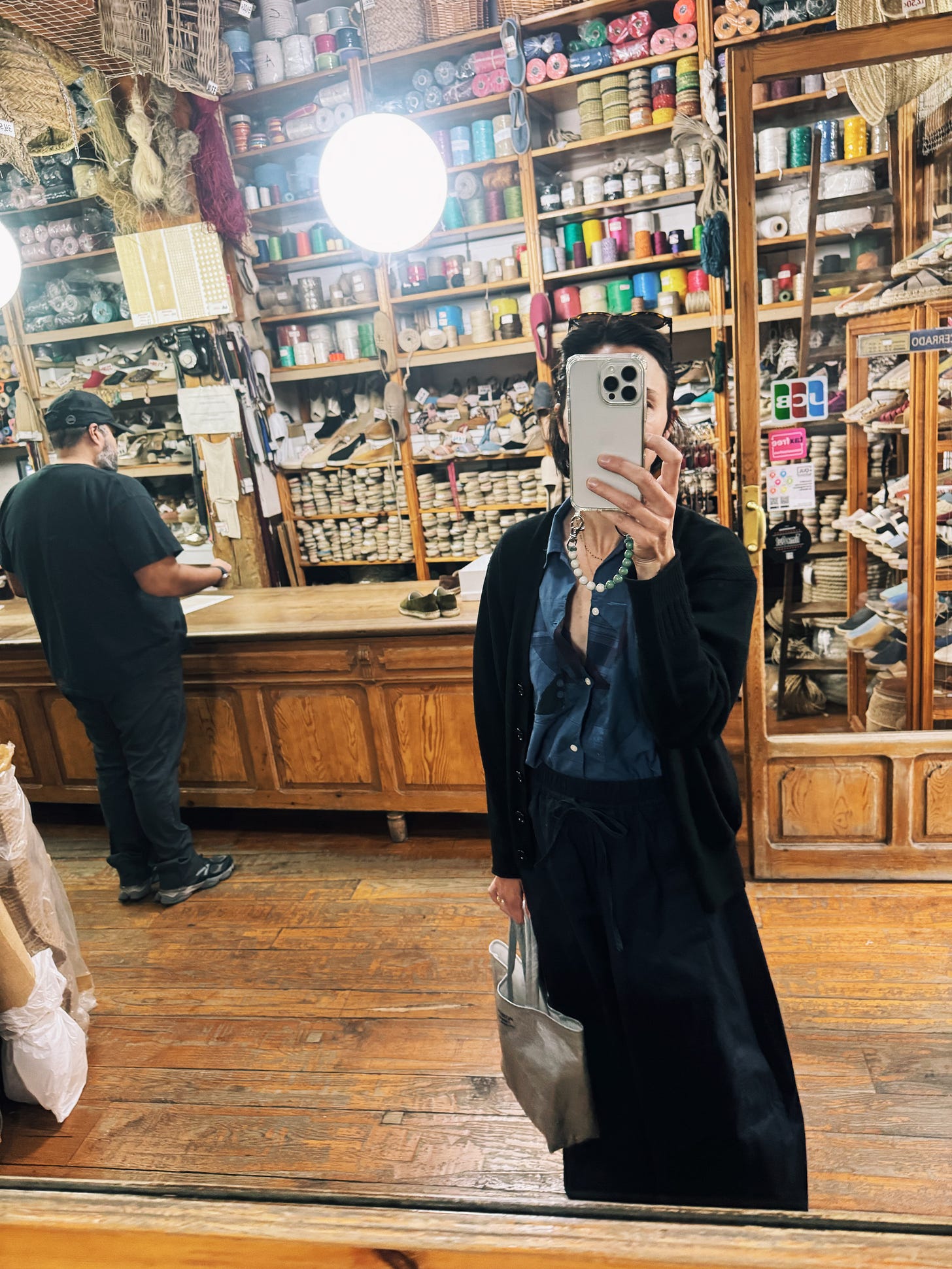
First stop: Casa Hernanz, mecca for anyone seeking authenticity in selection and experience. The family-owned Cordelería y Alpargatería, which opened in 1845 and remains today in its original location near Plaza Mayor, is dizzying. Rolls of jute lean against the walls; shoes are stapled up to the ceiling. The first time I went the line was out the door, so I decided to go back the next morning when it opens at 9:30am. Good call. I walked right in.
To pick a pair (or two) from the store’s overwhelming selection, I used a process of elimination. No stripes (not for me), no mary janes (also, not me, though cute), and no high-high wedges with ankle wraps (can you imagine that? On me?). The evenings are still cool in Madrid, so I chose a pair of Casa Harnanz’s own suede Pinara slippers (€36,50) and – for my Bahamian holiday later this summer – a crochet slingback with a slight tilt from the Spanish brand, Gaimo (€42).
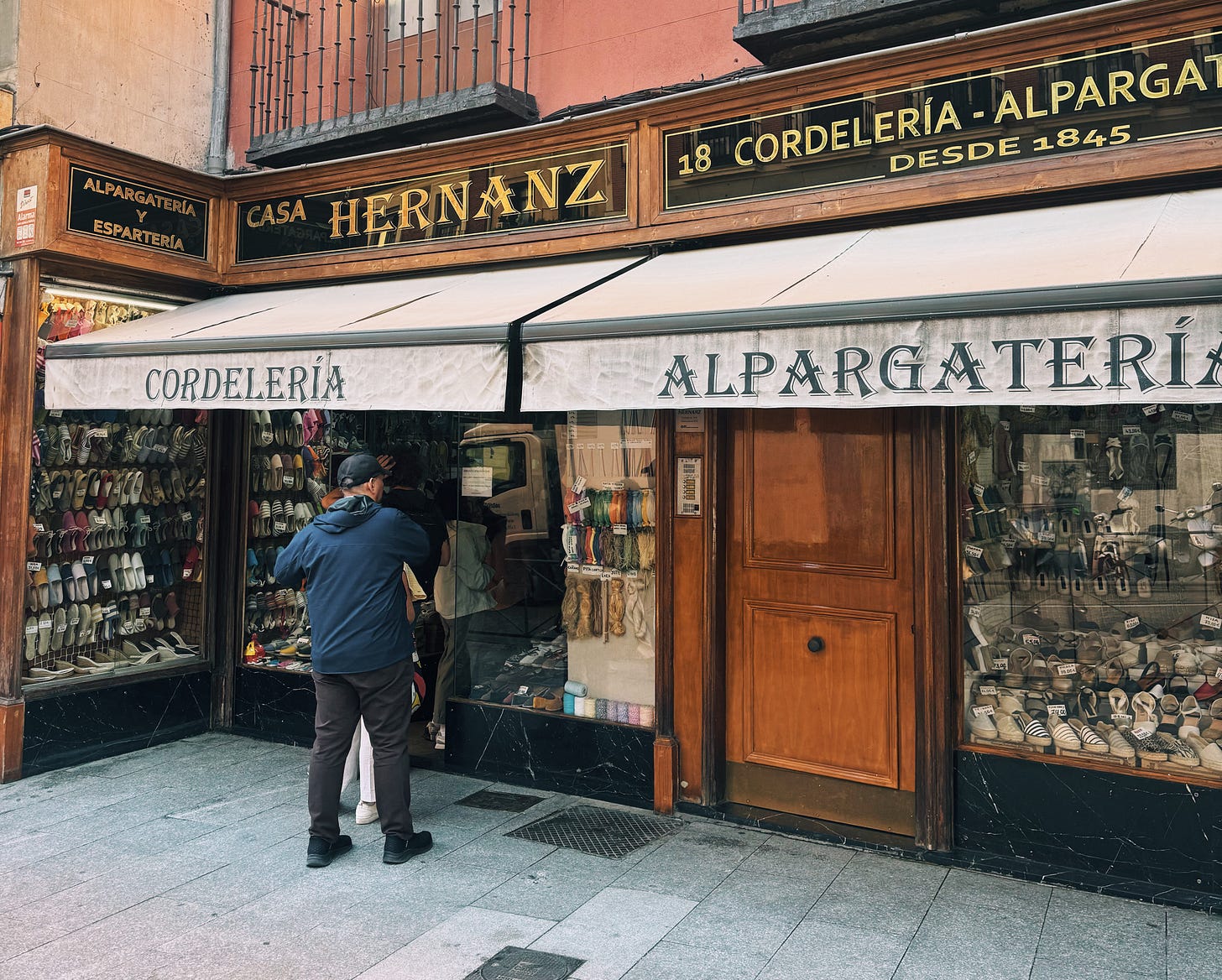
The alpargata, considered a descendant of the Egyptian sandal, predates the French espadrille. (Some Spanish brands call their rope-soled shoes “espadrilles,” and so I’m using both alpargata and espadrille interchangeably in this post). If you’re craving a complete history, click here. It’s fascinating.
Many companies make excellent versions of this historic shoe style today, so if you can’t get to Madrid this month, Soludos (which is having a Memorial Day Sale), J.Crew (which has theirs made in Spain), and Loeffler Randall (quality, dear Readers) have great options. Those in the States who prefer to go Spanish or go home? See the Footnote1.
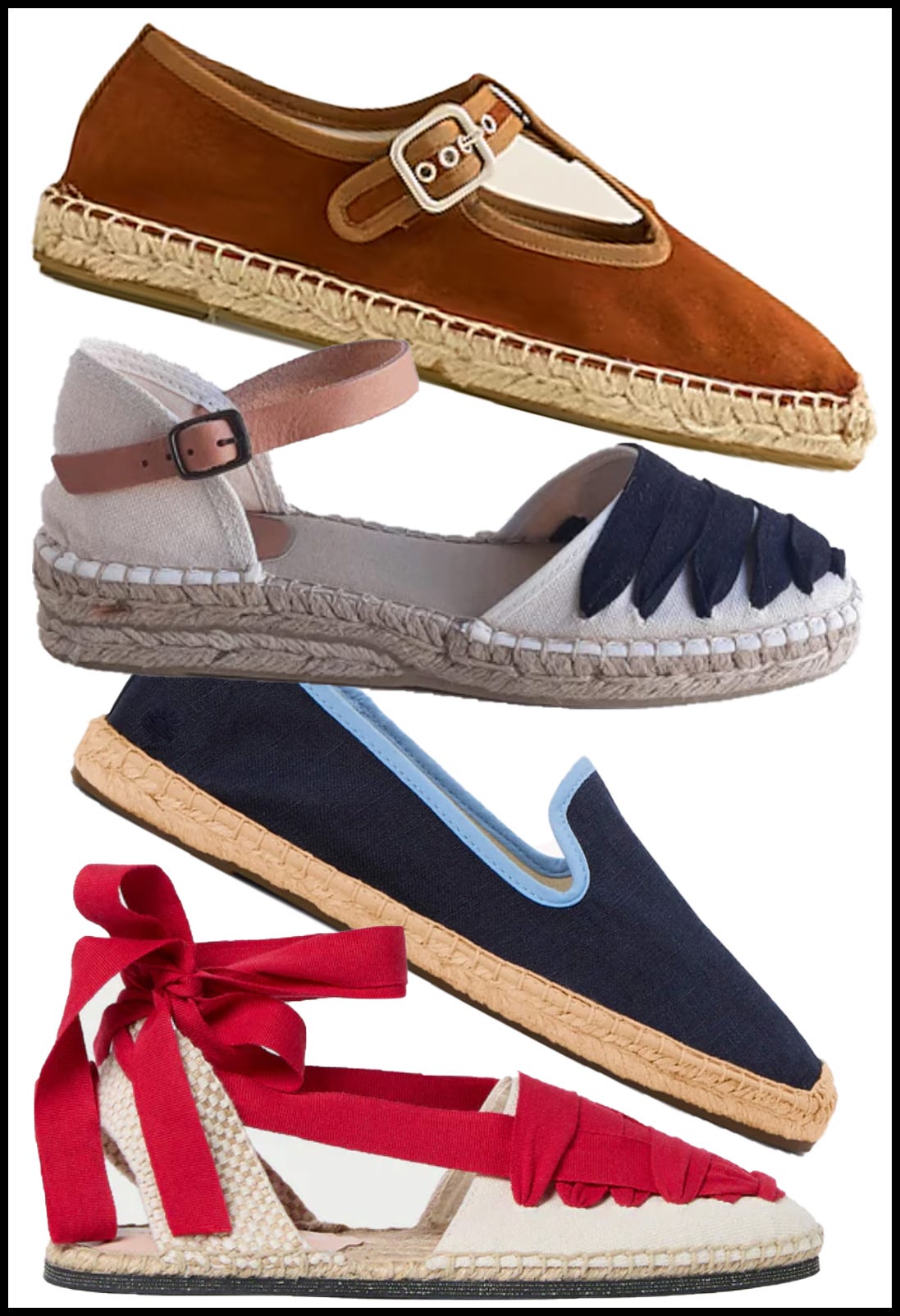
But back to my hunt, which led me next to Antigua Casa Crespo in Malasaña. There I found more shelves piled tight with traditional slippers and also these ribboned Dali sandals (€80) that adjust at the heel without having to wrap around the ankle (as mentioned, that’s just not for me).
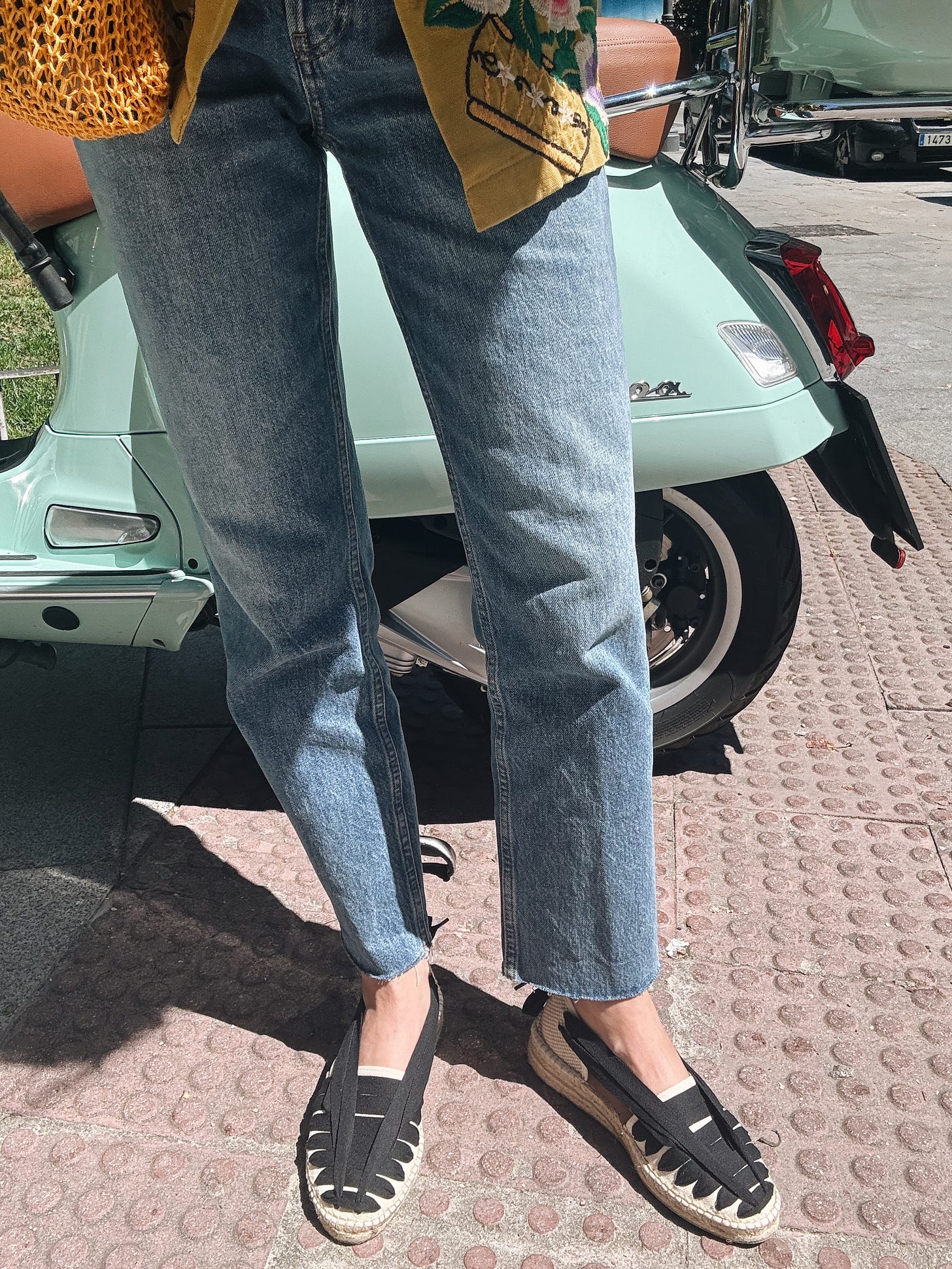
Antigua Casa Crespo was founded in 1863. Like Casa Hernanz, it still operates out of its original storefront on Calle del Divino Pastor. I should mention that in addition to alpargatas, they make and sell the softest, most comfortable zapatillas de casa, or house shoes (€29). I bought a pair in gray and a second pair of espadrilles that cover the foot and cross the ankle with thick elastic straps (€44), and left with more than my hands full.
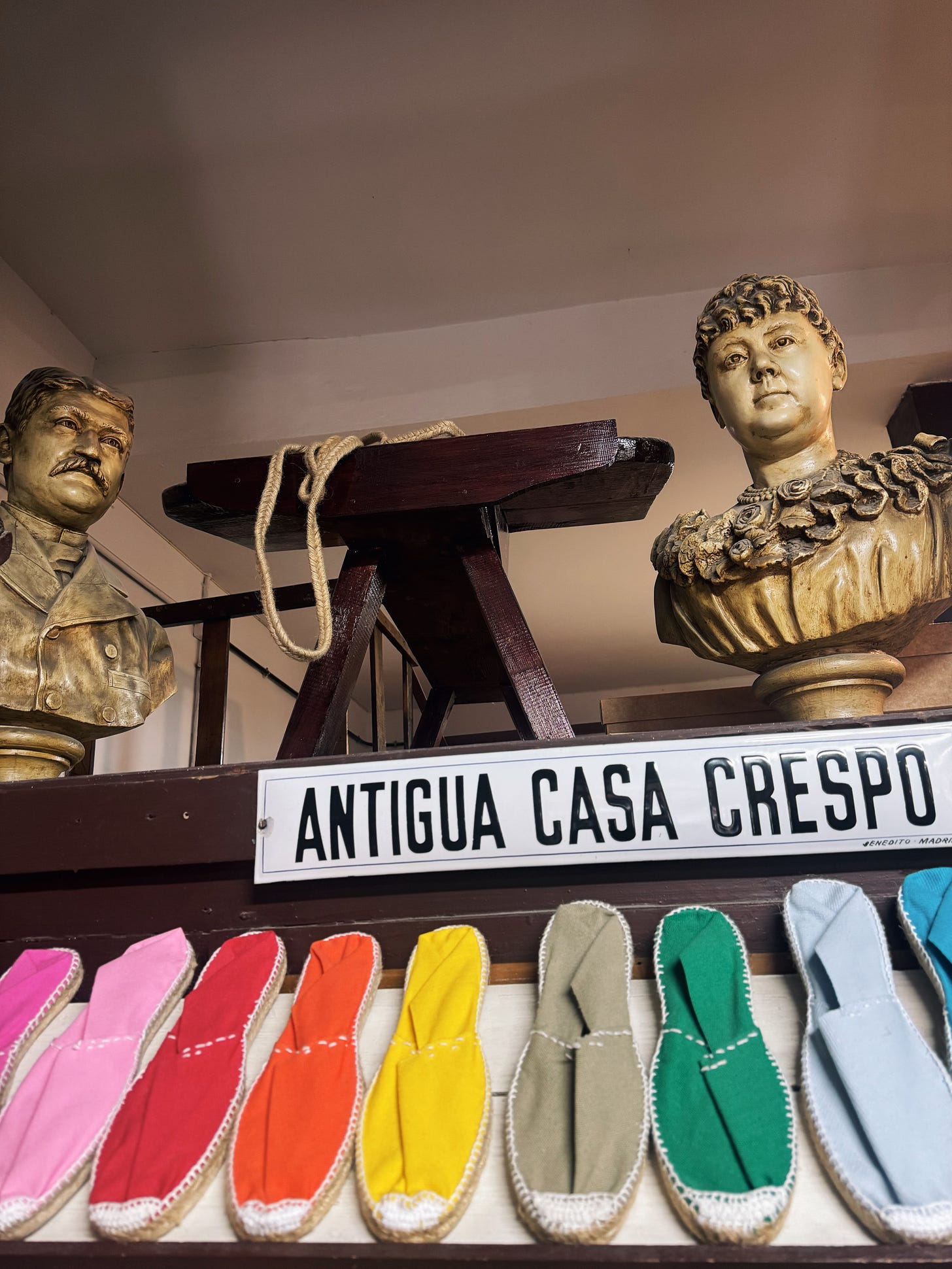
Allow me to take a quick detour to address the pants I’ve been wearing with all my new shoes, because though they go great with certain jeans (these Re/Dones, for example), their summery-ness actually begs for lightweight cotton pants. I hear them pleading for poplin. It’s such a natural fit. Drawstrings welcome.
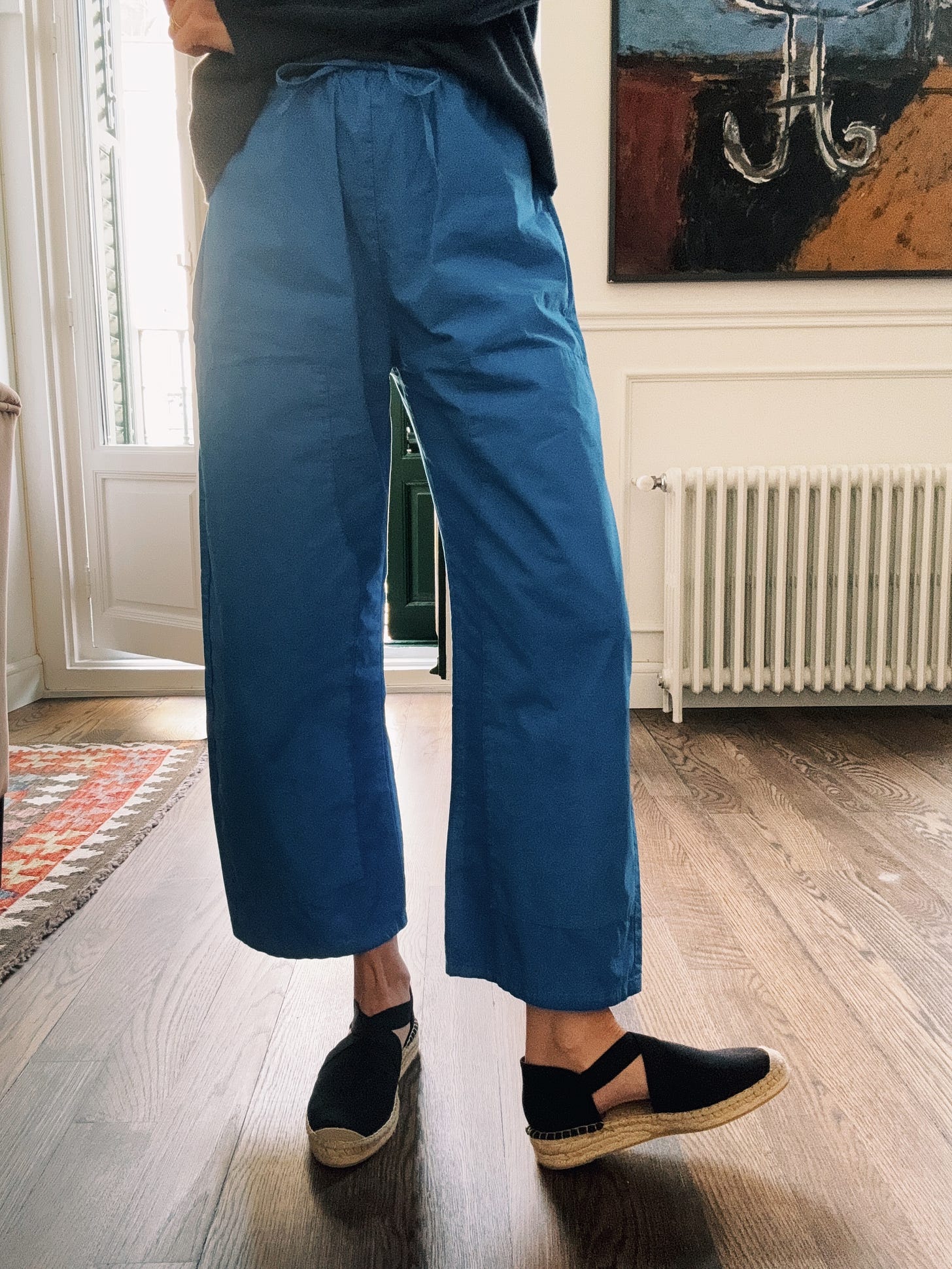
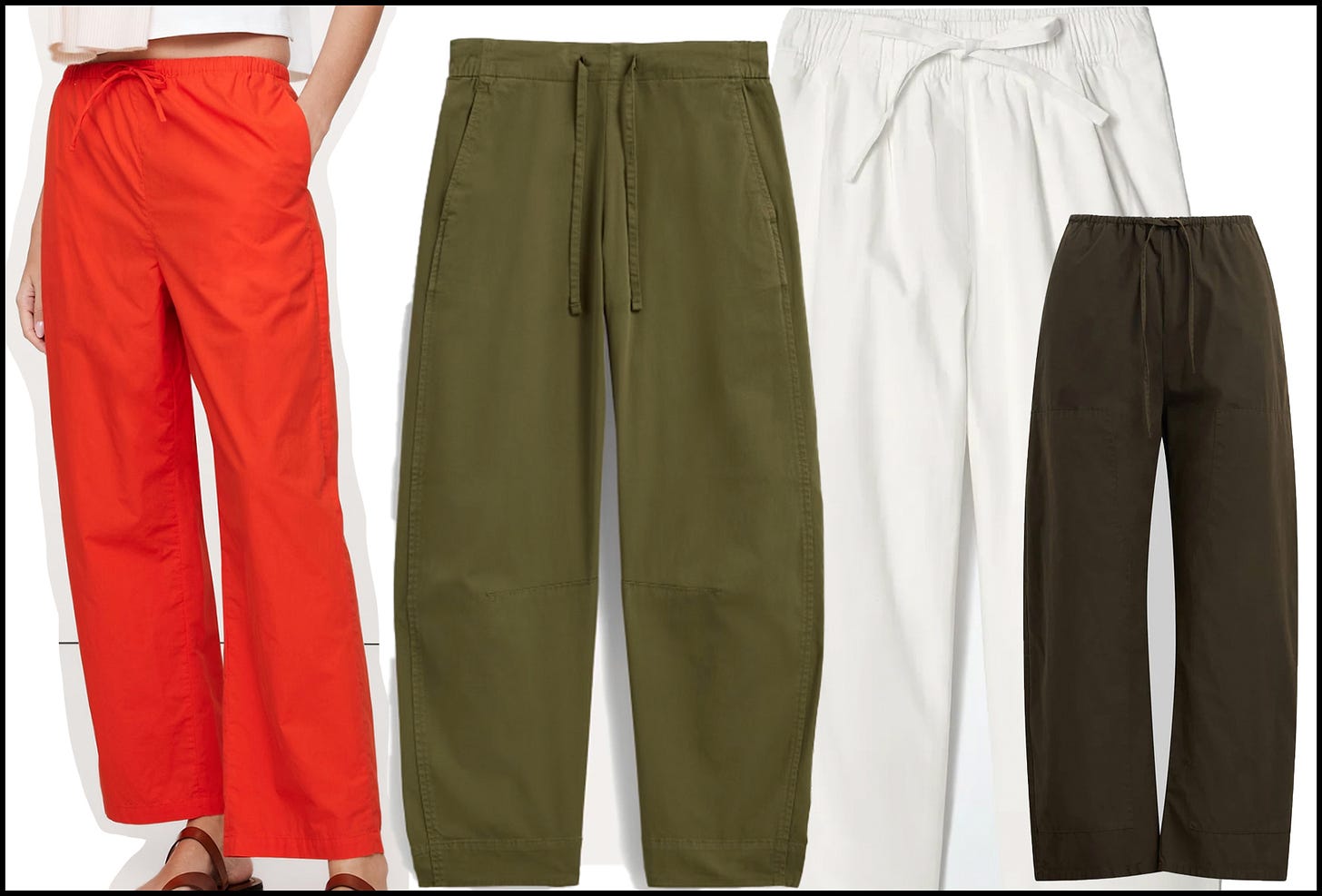
The final stop on my Alpargata Adventure was Calzados Lobo, an emporium of espadrilles and other national treasures, like the Ibizan sandal and Flamenco dance heel. Both school moms and costume department assistants told me to go to Lobo, a good sign. I like the Blucher flat (€34,95), and this linen Mule (€34), which I should have bought and might go back for. Oh! Before I forget, sizing for alpargatas is typically true, and they should fit snuggly at first because they’ll stretch a whole size up when you love and wear them to bits.
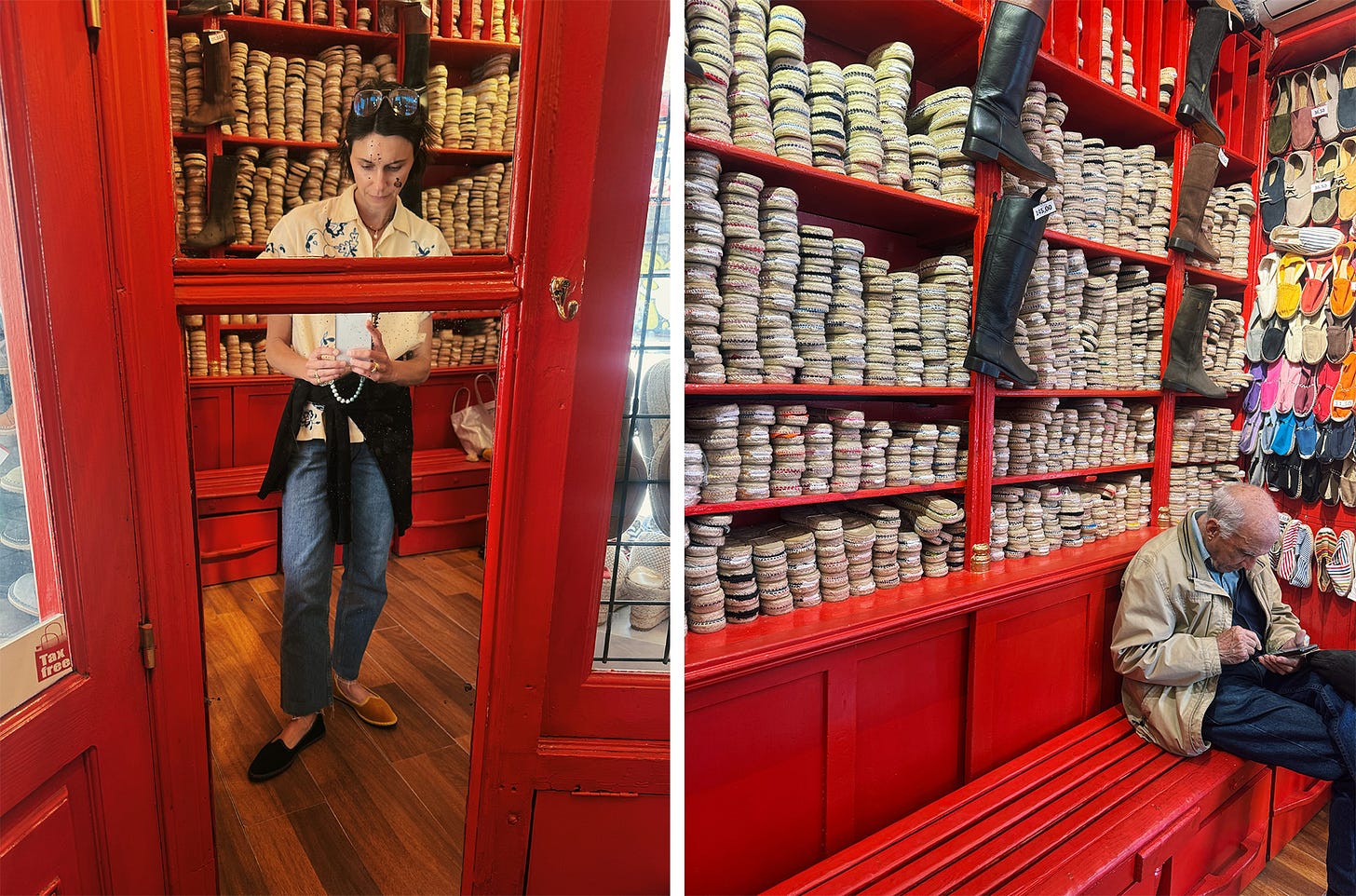
In last week’s letter, I promised thoughts on living abroad with little kids, but my conclusions about this are constantly expanding and every week reveals new wins and challenges (lots of challenges). I’m working on it (the letter and the life). Thank you for reading. It’s actually my birthday today (surprise!) and hitting that heart button is a perfect gift. As always, Denim Forever.
Jane
The most well-known Spanish espadrille company in the United States – and the world? – might be Castañer. Founded in 1927, this company was discovered and then championed by Yves Saint Laurent in the 70s and, well, the rest is fashion history. Today, Bergdorf Goodman, Saks Fifth Avenue, and Shopbop carry a wide selection of Castañers (go on, start browsing). Prices are higher, but the quality is, too. I’m especially keen on this fisherman shoe, a collaboration with Ancient Greek Sandals.
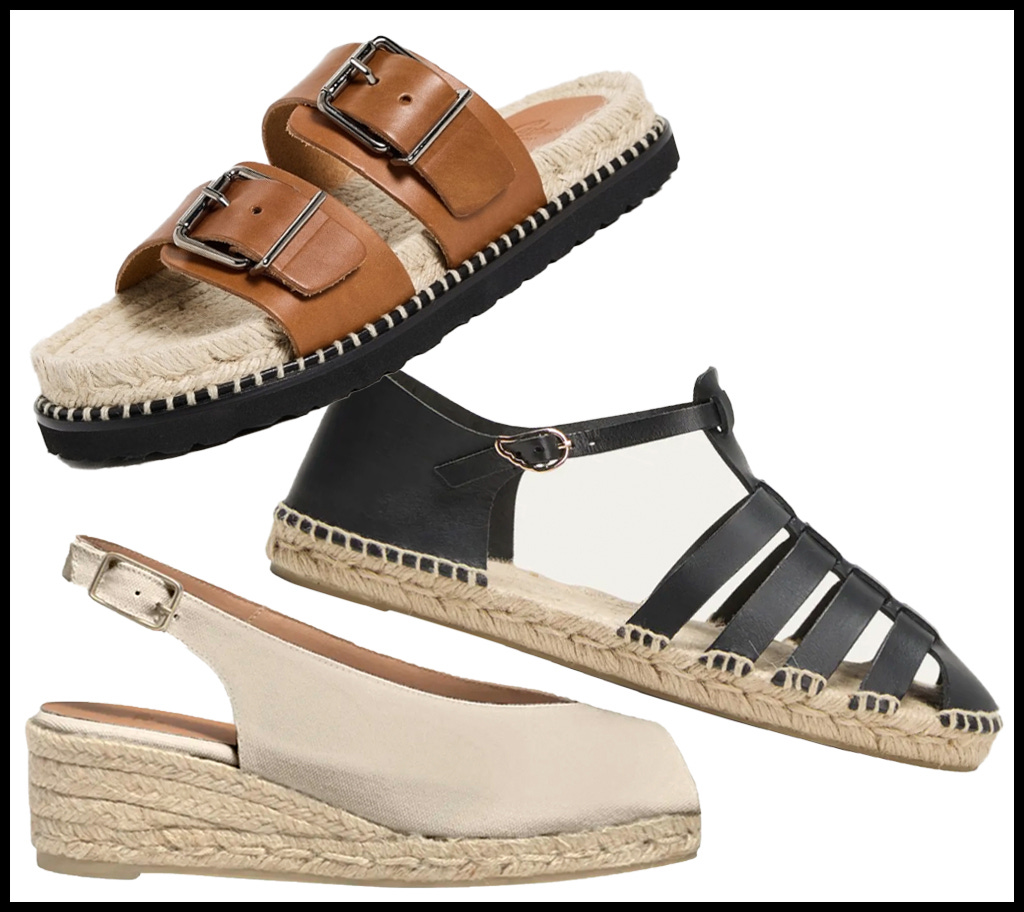






Happy Birthday! What a fun read. I bought the COS pants and am waiting for the to arrive.
I'm just cracking up here. I have the Leset Kyoto's in the same blue. Everyone hates them on me - my grandkids told me I look like a clown! I LOVE them, but maybe they'll be better with an alpargata than Birkenstocks? Love following your adventures. X